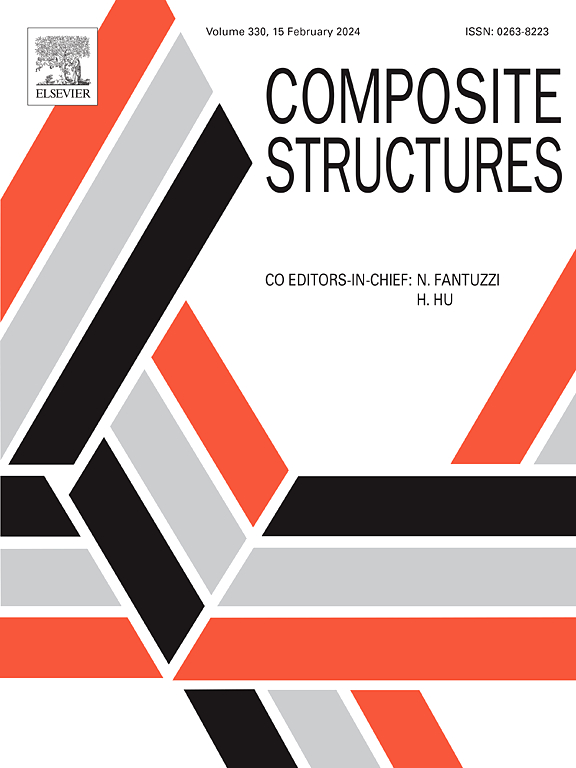Experimental and numerical study of specific bending behavior of tufted multilayered reinforcements and effects of tufting density
IF 6.3
2区 材料科学
Q1 MATERIALS SCIENCE, COMPOSITES
引用次数: 0
Abstract
The tufting technology enhances the delamination and impact resistance of composites. The presence of tufting yarns leads to a modification of the structure of the fabric, which affects the bending behavior of tufted reinforcements. Tufted reinforcements experience significant slippage during bending, challenging classical plate and shell theories. Therefore, the bending behavior of tufted reinforcement is investigated and a specific fibrous shell approach is proposed, assuming quasi-inextensibility of fibers and potential slippage between them. The influence of tufting yarns on the bending behavior is integrated into the constitutive model. The experimental results show that the bending stiffness of reinforcements can be increased by tufting density. The simulations exhibit a good agreement with experiments, demonstrating that the proposed approach can accurately capture not only the bending deflections of tufted reinforcements, but also the rotation of material direction indicators. Using the proposed numerical method, the prediction accuracy for deflection and rotation angle of tufted reinforcements reaches 90% in cantilever bending tests and 85% in three-point bending tests. These novel insights can deepen the understanding of the bending behavior of tufted reinforcements and be an asset of the developing numerical model for the forming simulation.
簇绒多层加固材料的特定弯曲行为及簇绒密度影响的实验和数值研究
簇绒技术可增强复合材料的分层和抗冲击性能。簇绒纱线的存在会改变织物的结构,从而影响簇绒加固材料的弯曲性能。簇绒增强材料在弯曲过程中会出现明显的滑移,这对经典的板和壳理论提出了挑战。因此,我们对簇绒加固材料的弯曲行为进行了研究,并提出了一种特定的纤维壳方法,假定纤维具有准伸展性,纤维之间存在潜在的滑移。簇绒纱线对弯曲行为的影响被纳入了构成模型。实验结果表明,簇绒密度可增加加固材料的弯曲刚度。模拟结果与实验结果吻合良好,表明所提出的方法不仅能准确捕捉簇绒加固材料的弯曲挠度,还能准确捕捉材料方向指示器的旋转。使用所提出的数值方法,在悬臂弯曲试验中对簇绒钢筋挠度和旋转角度的预测准确率达到 90%,在三点弯曲试验中达到 85%。这些新见解可以加深人们对簇状钢筋弯曲行为的理解,也是开发成型模拟数值模型的宝贵财富。
本文章由计算机程序翻译,如有差异,请以英文原文为准。
求助全文
约1分钟内获得全文
求助全文
来源期刊

Composite Structures
工程技术-材料科学:复合
CiteScore
12.00
自引率
12.70%
发文量
1246
审稿时长
78 days
期刊介绍:
The past few decades have seen outstanding advances in the use of composite materials in structural applications. There can be little doubt that, within engineering circles, composites have revolutionised traditional design concepts and made possible an unparalleled range of new and exciting possibilities as viable materials for construction. Composite Structures, an International Journal, disseminates knowledge between users, manufacturers, designers and researchers involved in structures or structural components manufactured using composite materials.
The journal publishes papers which contribute to knowledge in the use of composite materials in engineering structures. Papers deal with design, research and development studies, experimental investigations, theoretical analysis and fabrication techniques relevant to the application of composites in load-bearing components for assemblies, ranging from individual components such as plates and shells to complete composite structures.
 求助内容:
求助内容: 应助结果提醒方式:
应助结果提醒方式:


